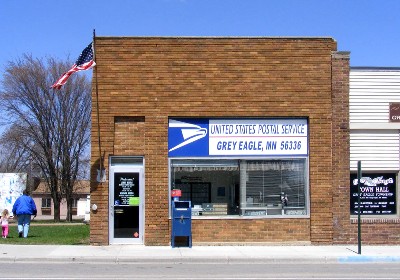Jul 11 2014
What If USPS Offered Banking Services? A Proposal for Zero-Cost Economic Stimulus Gains Steam
 There was a time in the United States when you could walk into a post office to mail a letter and also do your banking. The Postal Savings System started in 1911 and allowed millions of Americans, many of them new immigrants, to save money. Although postal banking was shut down in 1967, at its peak the US postal service was holding $3.4 billion dollars worth of savings.
There was a time in the United States when you could walk into a post office to mail a letter and also do your banking. The Postal Savings System started in 1911 and allowed millions of Americans, many of them new immigrants, to save money. Although postal banking was shut down in 1967, at its peak the US postal service was holding $3.4 billion dollars worth of savings.
Today, sixty eight million Americans or about one in four households do not even have bank accounts. In January the Office of the Inspector General of the US Postal Service put forth a proposal to bring back banking services to postal customers. While bankers and payday loan companies vehemently oppose the plan, the United States Conference of Mayors at its annual meeting in June fully endorsed the proposal.
While there are 32,000 post offices in the country, 60% of them are located in areas that are called ‘bank deserts’ where there is only one bank or no banks at all. The postal service, which already provides money orders and transfers, could also provide small dollar loans, ATMs and online bill payment. Financial services provided by the post office could potentially generate up to $8.9 billion in revenue while also providing relief to the 12 million people who relay on payday loans with their exorbitant fees to survive.
GUEST: Marc Armstrong is the co-founder of the educational nonprofit Public Banking Institute and its sister advocacy organization, BankACT.
Visit www.bankact.org for more information.
2 Responses to “What If USPS Offered Banking Services? A Proposal for Zero-Cost Economic Stimulus Gains Steam”





Some folks in the San Francisco Bay Area are considering some kind of local banking system.
Working with the US Postal Service to set up such a system could be a good solution to starting such a program.
Protecting the US Postal Service by by increasing their revenue rather than cutting back service is a double positive.
Automating the payment system makes a lot of sense.
The economically disadvantaged have grown in numbers over the last two decades, yet their economic existence has been steadily devoured by the check cashing & payday loan-shark establishments. In terms of economic purchasing power, legal-scam operations ended up extorting a whopping $89 billion in interest and fees … in 2012 alone. That’s $21.5 Billion more than the whole operating expenses of USPS for the same year. Low-income households spend 10% of their annual income on basic financial services – having no choice but to borrow short-term in order to meet their basic living needs. The Postal Service can fill the gap of binding this nation together at a time that economic inequality has reached historical lows.
Banking institutions have very little interest in low-income earners and stayed off the path of check cashing & payday loan-shark establishments. To them, this is just a money game – just as the sub-prime mortgage market was prior to the economic meltdown of 2008.
As soon as the USPS IG published their study, the bankers have become more agitated and vehemently declared their mighty opposition. What is interesting is that USPS leadership does not even need Congressional approval to move on the postal banking plan. Sadly, the current postal Board of Governors is tilting more towards cutting costs by reducing service, privatizing retail operations and begging Congress to do … something … anything. In order for postal banking to become reality we need a postal leadership who truly believes that it is indeed a cause worth fighting for.